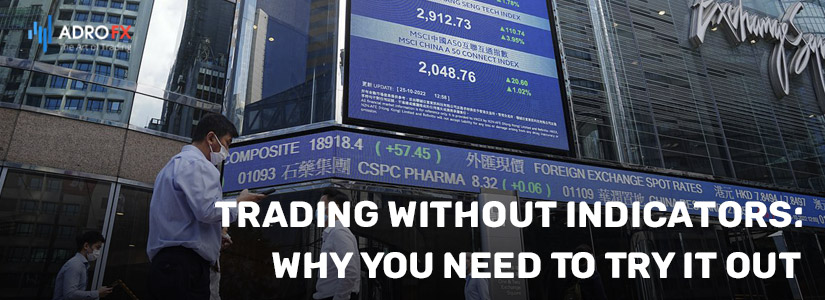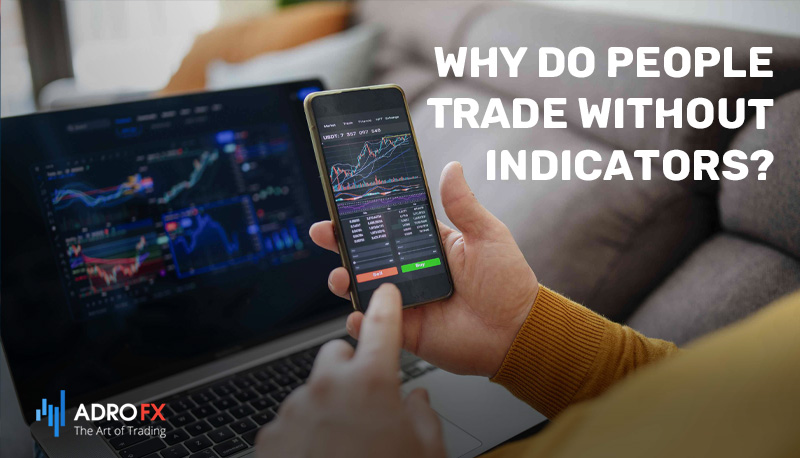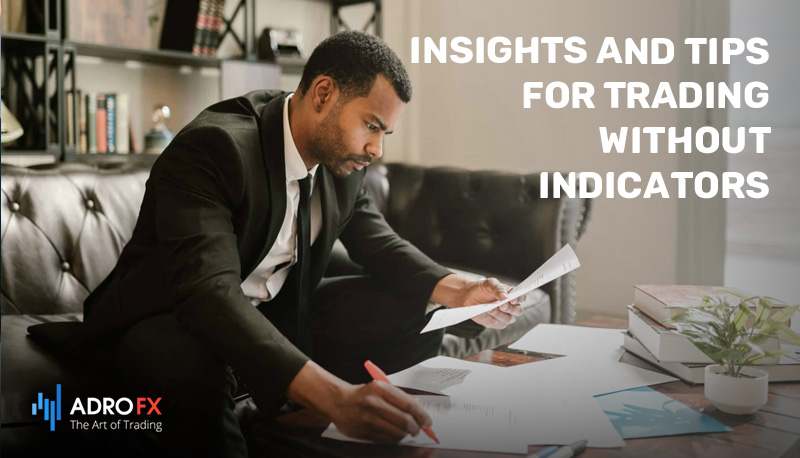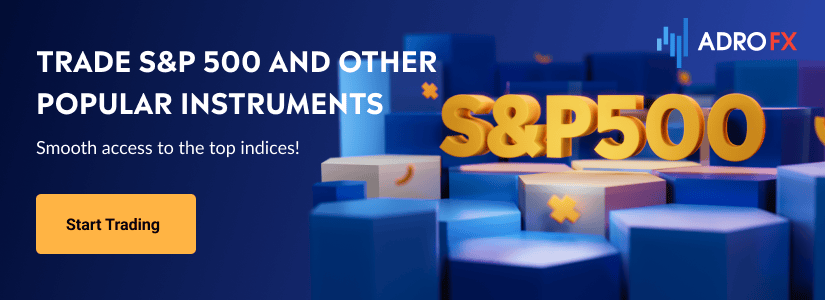Trading Without Indicators – Why You Need To Try It Out

In the world of trading, indicators have long been considered essential tools for analyzing market trends, identifying entry and exit points, and making informed trading decisions. Traders often rely on indicators such as moving averages, oscillators, and trend lines to gain insights into price movements and potential trading opportunities. However, there is an alternative approach that challenges the conventional reliance on indicators: trading without indicators.
Trading without indicators involves a departure from the traditional use of technical analysis tools and instead focuses on reading and interpreting raw price action and market dynamics. This approach advocates for a deeper understanding of supply and demand, market sentiment, and chart patterns as the primary drivers of trading decisions. While it may seem unconventional, trading without indicators has gained popularity among traders who seek simplicity, flexibility, and a more intuitive approach to the markets.
In this article, we will explore the concept of trading without indicators and why you should consider trying it out. We will delve into the advantages and potential pitfalls of this approach, providing insights and tips to help you navigate the markets with confidence. Whether you are a novice trader looking to simplify your strategy or an experienced trader seeking a fresh perspective, understanding the benefits of trading without indicators can open up new possibilities and improve your trading skills. So, let's dive in and explore the fascinating world of trading without indicators.
What Is Trading Without Indicators?
Trading without indicators is an approach to trading that involves making trading decisions based solely on raw price action and market dynamics, without relying on traditional technical indicators. Instead of using tools such as moving averages, oscillators, or trend lines, traders who adopt this approach focus on interpreting and analyzing the price movement itself, along with other factors such as supply and demand, market sentiment, and chart patterns. By observing and understanding these fundamental aspects of the market, traders aim to identify patterns, trends, and potential trading opportunities with a more intuitive and simplified approach. Trading without indicators requires a keen eye for detail, a deep understanding of market dynamics, and the ability to interpret and act upon price action signals effectively.

Why Do People Trade Without Indicators?
Trading without indicators has gained popularity among traders for several reasons. Here are some of the key motivations behind this approach:
- Simplicity: Trading without indicators offers a simpler trading approach. By eliminating the clutter of multiple indicators on charts, traders can focus on the essential aspects of price action and market dynamics. This streamlined approach can help traders make quicker and more intuitive decisions.
- Flexibility: Indicators are based on specific mathematical formulas and parameters, which may not always capture the nuances of every market situation. Trading without indicators allows traders to adapt their strategies to changing market conditions more fluidly. It enables them to respond to market dynamics in real time without being constrained by rigid indicator rules.
- Price Action Focus: Trading without indicators places a strong emphasis on understanding and interpreting price action directly. Traders learn to analyze patterns, trends, support and resistance levels, and other key price-related factors. This deep understanding of price dynamics can provide valuable insights into market sentiment and potential future price movements.
- Reduced Lag: Indicators are based on historical price data, which introduces a certain degree of lag in the signals they generate. By trading without indicators, traders can potentially reduce lag and obtain more immediate and accurate information about current market conditions.
- Personalization: Each trader has unique trading preferences, risk tolerance, and trading styles. Trading without indicators allows traders to personalize their strategies and develop their own set of rules and criteria based on their individual understanding of the market.
- Psychological Benefits: For some traders, relying solely on indicators can lead to over-reliance or confusion when multiple indicators generate conflicting signals. Trading without indicators can provide psychological benefits by simplifying the decision-making process, reducing noise, and promoting a more focused and confident trading mindset.
While trading without indicators offers its advantages, it is important to note that it requires experience, skill, and a deep understanding of market dynamics. Traders who adopt this approach must dedicate time to studying price action patterns, developing a keen sense of market behavior, and practicing disciplined risk management techniques.
Advantages and Potential Pitfalls of Trading Without Indicators
Advantages:
- Enhanced Focus on Price Action
Trading without indicators allows traders to develop a deeper understanding of price action and its underlying dynamics. By focusing solely on price movements, traders can gain valuable insights into market sentiment, trends, and potential reversals.
- Increased Adaptability
Without relying on fixed indicator rules, traders can adapt their strategies to different market conditions more easily. They can adjust their trading approach based on real-time price action and respond quickly to changing market dynamics.
- Streamlined Decision-Making
Eliminating the use of multiple indicators simplifies the decision-making process. Traders can make quicker judgments based on clear price patterns and key levels of support and resistance.
- Reduction of Lag
Indicators often rely on historical price data, which introduces a certain degree of lag. By trading without indicators, traders may reduce lag and obtain more immediate signals about current market conditions.
- Greater Personalization
Trading without indicators allows traders to personalize their trading strategies based on their own observations and understanding of the market. This customization can lead to a more unique and tailored trading approach.
Potential Pitfalls
- Subjectivity
Trading without indicators relies heavily on a trader's interpretation of price action. This subjectivity introduces a higher level of personal bias and may lead to inconsistent or unreliable trading decisions.
- Increased Complexity
Analyzing raw price action requires a deep understanding of chart patterns, candlestick formations, and market dynamics. It may take time and experience to develop the necessary skills and knowledge to effectively trade without indicators.
- Lack of Confirmation
Indicators often provide confirmation signals when multiple indicators align. Without the use of indicators, traders may miss out on additional confirmation and rely solely on price action, which can increase the risk of false signals.
- Limited Tools for Risk Management
Indicators often provide specific tools for risk management, such as stop-loss levels or trailing stops. When trading without indicators, traders need to develop alternative risk management techniques to protect their positions effectively.

Insights and Tips for Trading Without Indicators
Trading without indicators requires a different approach and mindset compared to traditional indicator-based trading. Here are some insights and tips to help you navigate the markets effectively when trading without indicators:
- Master Price Action Analysis
Price action analysis becomes the cornerstone of your trading strategy. Study different chart patterns, candlestick formations, and key support and resistance levels. Learn to identify trends, reversals, and important price levels that can guide your trading decisions.
- Utilize Multiple Time Frames
Analyzing price action across multiple time frames can provide a broader perspective on market trends and potential trading opportunities. Use higher time frames for trend identification and lower time frames for entry and exit timing.
- Incorporate Support and Resistance
Identify significant support and resistance levels on your charts. These levels act as barriers to price movement and can offer valuable insights into potential reversal points or areas of interest for trade entries.
- Monitor Market Structure
Pay attention to the overall market structure and price patterns. Look for signs of trend continuation or potential trend reversal. Understanding market structure can help you align your trades with the prevailing market sentiment.
- Apply Price Patterns
Price patterns, such as triangles, wedges, and head and shoulders formations, can provide valuable signals for potential breakouts or trend reversals. Learn to recognize these patterns and understand their implications.
- Practice Patience and Discipline
Trading without indicators requires patience and discipline. Wait for clear and strong price signals before entering trades. Avoid overtrading and be selective in your trade setups.
- Use Proper Risk Management
Implement effective risk management techniques to protect your capital. Set appropriate stop-loss orders based on key support and resistance levels or the structure of the price action. Consider position sizing and risk-to-reward ratios to ensure your trades have a favorable risk profile.
- Incorporate Fundamental Analysis
While trading without indicators primarily focuses on price action, consider incorporating fundamental analysis to gain a broader understanding of the market. News events and economic data releases can influence price movements and provide additional context for your trades.
- Maintain a Trading Journal
Keep a detailed record of your trades, including your rationale, entry and exit points, and observations. Reviewing your trading journal regularly can help you identify patterns, strengths, and areas for improvement in your trading approach.
- Continuously Learn and Improve
Trading without indicators requires ongoing learning and improvement. Stay updated with market news, research different price action techniques, and engage in continuous practice. Attend webinars, read books, and follow experienced traders who trade without indicators to gain further insights and refine your skills.
Remember, trading without indicators may not be suitable for everyone, and it requires practice and experience to become proficient. Gradually transition into this approach, starting with smaller position sizes and building confidence over time. As with any trading method, thorough preparation, discipline, and risk management are key to success.
Conclusion – Should You Be Trading Without Indicators?
Deciding whether to trade without indicators is a personal choice that depends on your trading style, preferences, and level of expertise. While trading without indicators offers certain advantages, it may not be suitable for everyone. Here are some factors to consider when evaluating whether to adopt this approach:
- Trading Style: Trading without indicators requires a focus on price action and chart patterns. If you enjoy analyzing raw price data, identifying trends, and making intuitive trading decisions, this approach may align well with your trading style.
- Experience and Skill Level: Trading without indicators requires a deep understanding of price action and market dynamics. It is often recommended for traders with a solid foundation in technical analysis and a comprehensive understanding of chart patterns. If you are relatively new to trading, it may be beneficial to develop a strong grasp of indicator-based strategies before exploring trading without indicators.
- Patience and Discipline: Trading without indicators requires patience and discipline. You must wait for clear price signals and have the discipline to follow your trading plan without relying on indicator-generated buy or sell signals. If you possess these qualities and can stay focused on price action analysis, this approach may suit you.
- Risk Management: As with any trading strategy, risk management is crucial. Without indicators, you need to develop alternative risk management techniques, such as setting appropriate stop-loss orders based on key price levels or employing trailing stops. Evaluate your risk tolerance and ensure you have a robust risk management plan in place.
- Personal Bias: Trading without indicators exposes you to personal bias as you rely solely on your interpretation of price action. It is important to be aware of this potential bias and remain objective in your analysis. Regularly review your trades and seek feedback from experienced traders to minimize the impact of personal bias.
Ultimately, the decision to trade without indicators depends on your individual circumstances and preferences. Some traders thrive without indicators, finding the simplicity and flexibility of this approach to be advantageous. Others may prefer the structure and guidance provided by traditional technical indicators.
If you decide to explore trading without indicators, commit to continuous learning, practice, and improvement. Study price action patterns, develop a deep understanding of market dynamics, and refine your skills through practical application.
Remember that there is no one-size-fits-all approach to trading. What matters most is finding a strategy that aligns with your trading goals, allows you to effectively manage risk, and gives you the confidence to make informed trading decisions. Consider your strengths, preferences, and risk tolerance to determine whether trading without indicators is the right path for you.
About AdroFx
Established in 2018, AdroFx is known for its high technology and its ability to deliver high-quality brokerage services in more than 200 countries around the world. AdroFx makes every effort to keep its customers satisfied and to meet all the trading needs of any trader. With the five types of trading accounts, we have all it takes to fit any traders` needs and styles. The company provides access to 115+ trading instruments, including currencies, metals, stocks, and cryptocurrencies, which make it possible to make the most out of trading on the financial markets. Considering all the above, AdroFx is the perfect variant for anyone who doesn't settle for less than the best.










